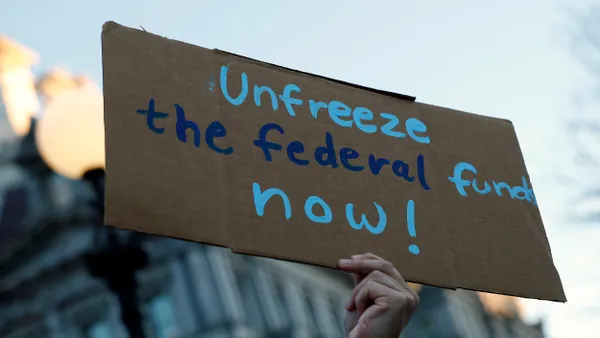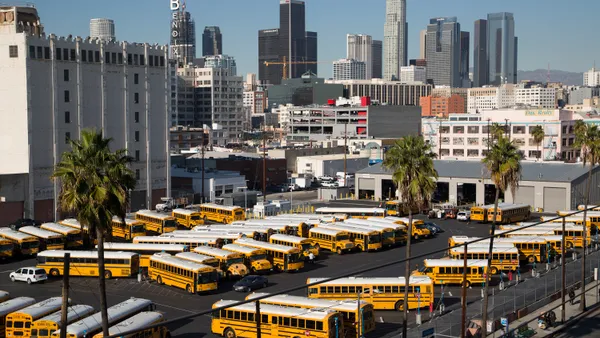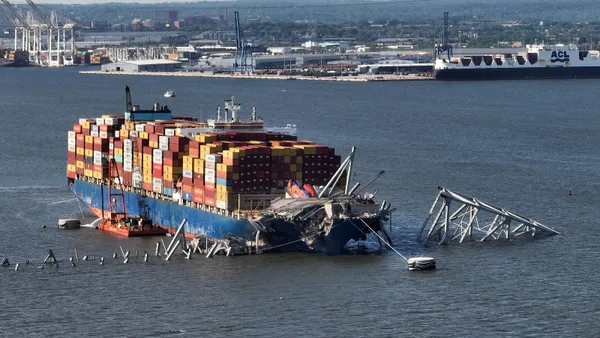Dive Brief:
-
New York City Mayor Bill de Blasio announced the city’s budget for fiscal year 2021 (FY21), which previewed "cautious planning" and deep cuts across multiple sectors to address constraints amid the novel coronavirus pandemic. At $89.3 billion, the budget is $3.4 billion smaller than the one for fiscal year 2020 (FY20) to account for a potential $7.4 billion tax revenue loss across both years.
-
The sanitation department, for instance, saw its e-waste and community composting subsidy programs temporarily disappear, amounting to cost savings of $3.4 million and $3.5 million, respectively in FY21 and beyond. The city also curtailed funding for its Summer Youth Employment Program; Vision Zero program; tree pruning and tree stump removal efforts; and educational district-charter partnerships program, among other adjustments.
- The budget aims to keep safety, health, shelter and access to food top of mind, but "Washington must also step up" to get New Yorkers through the pandemic, De Blasio said.
Dive Insight:
A recent National League of Cities (NLC) survey found 76% of large cities (populations of 500,000 or more) anticipate needing to cut public services — and ultimately furlough or lay off staff — to grapple with the pandemic.
"Cities don’t have the luxury of running deficits and have to balance budgets every year, so the effects of coronavirus on city budgets could be quite dramatic without additional direct resources provided to them from the federal government," Brooks Rainwater, senior executive of the Center for City Solutions at NLC, told Smart Cities Dive in an email.
The city has spent more than $700 million to mitigate the impacts of COVID-19, with an estimated $3.5 billion to be spent total by the end of the calendar year. While it may make sense on paper to cut programs that don’t "directly" address coronavirus, some say suspending services like e-waste and composting collection may not be the right call.
"It is a false trade-off to cut environmental and health programs in order to redirect funds for coronavirus," Robert Silverman, an urban and regional planning professor at the University of Buffalo, told Smart Cities Dive in an email. He said cities need to deal with pollutants and environmental risks, and further emphasized that programs like those cut under the sanitation department are labor intensive and could help bring back jobs.
Mayor de Blasio contends that aid from the federal government's $2.3 trillion Coronavirus Aid, Relief, and Economic Security (CARES) Act will have a "muted" growth impact on New York, as the provisions are focused more on safeguarding adverse effects instead of acting like "an outright stimulus," according to the executive budget.
Due to its size, New York is one of just 0.5% of U.S. municipalities to actually receive funding from the CARES Act. Kathy Maness, council member of Lexington, SC and NLC first vice president, asked on a recent press call hosted by the NLC and U.S. Conference of Mayors (USCM): "How can this bill be the bill that's supposed to help America respond and recover, when cities in 27 of our 50 states are not going to receive any direct relief funding?"
The USCM and NLC are seeking $250 billion in emergency funding for communities in need of COVID-19 relief.
Dayton, OH Mayor and USCM Second Vice President Nan Whaley emphasized that cities are still looking at 2020 when it comes to cost-cutting.
"We are looking at our budget and basically starting over again because of the lack of revenue that we’ll see versus the income tax," Whaley told Smart Cities Dive. The city reached out to its department heads last week and asked them to look at 18% cuts in each department just for 2020, to focus on the essential services they must provide, she said.
To keep up with all of our coverage on how the new coronavirus is impacting U.S. cities, visit our daily tracker.











